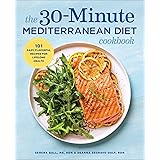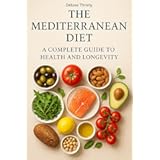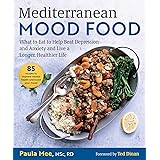It can feel like a maze, navigating the endless advice on how to effectively lose fat and, more importantly, keep it off. Perhaps you’ve been there—enthusiastically starting a new diet, seeing initial results, only to find yourself back where you began a few months later. This common cycle of restriction and regain often leaves individuals feeling frustrated and questioning if sustainable fat loss is even achievable. The video above sheds light on a science-backed approach that simplifies this journey, focusing not on deprivation, but on strategic eating. This article will expand on these principles, providing a deeper dive into making lasting dietary changes.
Understanding the Core Principle: The Calorie Deficit
At the heart of any successful fat loss strategy is a fundamental concept: the calorie deficit. This means consuming fewer calories than your body expends each day. It’s a bit like managing a budget; if more money is spent than earned, the account balance decreases. Similarly, when caloric intake is less than energy expenditure, the body is compelled to tap into its stored energy reserves, primarily fat, for fuel.
While the video emphasizes this universal truth, it’s crucial to understand that not all calorie deficits are created equal. The *quality* of the calories consumed plays a significant role in how one feels, how effectively fat is lost, and how well muscle mass is preserved. A deficit achieved through nutrient-poor foods can lead to fatigue and nutrient deficiencies, making the diet unsustainable. A balanced approach ensures that essential nutrients are still provided while gradually reducing overall calorie intake.
The Power of Protein: Building Blocks for Fat Loss
One of the most impactful dietary shifts for sustainable fat loss involves increasing protein intake. Many people underestimate the profound effect protein has on satiety and body composition. The video highlights a compelling 2005 study where participants, by simply doubling their typical protein consumption, inadvertently reduced their overall daily caloric intake by an average of 440 calories, leading to nearly 10 pounds of fat loss over 12 weeks. This demonstrates how protein can naturally curb hunger and regulate appetite without conscious restriction.
Beyond its satiating effects, protein plays a critical role in preserving muscle mass during a calorie deficit. When fewer calories are consumed, the body often prioritizes burning energy from either fat or muscle. Adequate protein intake, ideally at least 0.8 grams per pound of body weight per day, signals the body to maintain its muscle tissue, directing fat stores to be utilized for energy instead. This not only optimizes fat loss but also supports a healthy metabolism, as muscle is more metabolically active than fat. High-protein diets are, therefore, a cornerstone for both losing fat effectively and preventing its regain, fostering a more robust and sustainable outcome.
Carbohydrates: Fueling Your Body, Not Fearing Them
The role of carbohydrates in a fat loss diet is often misunderstood, leading many to drastically cut them out. As the speaker recounts from a personal anecdote, such extreme measures can leave one feeling sluggish and underperforming, especially during physical activity. Carbohydrates are the body’s primary and preferred source of energy, particularly for high-intensity exercise and daily functioning. Depleting them can initially show rapid weight loss, but this is largely attributed to water loss, as carbohydrates are stored with water in the muscles.
It is understood that as long as a calorie deficit is maintained and sufficient protein is consumed, fat loss will occur irrespective of carbohydrate intake levels. The key lies in strategic carbohydrate consumption. Opting for less processed carbohydrates—like whole grains, fruits, and vegetables—provides fiber and nutrients, contributing to satiety and overall health. Furthermore, timing carbohydrate intake, such as consuming them before and after workouts, can optimize energy levels and recovery, enhancing performance without derailing fat loss efforts. This approach allows for dietary flexibility, accommodating cultural preferences, like enjoying rice as a staple, while still progressing towards goals.
Decoding Dietary Fats: Quality and Moderation
Fats, while essential for bodily functions and hormone production, are the most calorie-dense macronutrient, containing 9 calories per gram compared to protein and carbohydrates’ 4 calories per gram. This higher density makes them notoriously easy to overconsume without realizing it, as a small amount can significantly contribute to total caloric intake. The video vividly illustrates this with examples of hidden fats in common foods like salad dressing, cooking oils, and even seemingly innocuous peanut butter.
Complete elimination of fats is not the solution; instead, moderation and smart swaps are advised. This means choosing leaner cuts of meat, opting for skim milk over full-cream, and being mindful of portion sizes for nuts, seeds, and oils. Certain high-fat foods, like avocados or olive oil, are packed with beneficial nutrients and healthy fats that support heart health and satiety. The challenge lies in integrating these into a calorie-controlled plan without exceeding daily limits. Balancing these nutrient-dense options with an awareness of calorie density allows for enjoyment without derailing progress, recognizing that occasional indulgences can be accommodated within a flexible framework.
The Balanced Plate Concept: A Sustainable Framework
Rigid, unyielding meal plans often contribute to diet fatigue and eventual rebound weight gain, as highlighted by a 2021 study where subjects on a strict regimen quickly regained lost fat after the diet concluded. These plans, while effective for short-term fat loss, typically fail to instill lasting habits. A more adaptable and educational approach is the “Balanced Plate” concept, which empowers individuals to make informed food choices rather than blindly following a prescriptive menu.
This method proposes a simple visual guide for structuring most meals:
- **Quarter of the Plate for Protein:** Prioritize lean protein sources such as chicken breast, fish, eggs, tofu, or lean ground beef. This ensures adequate protein for muscle preservation and satiety.
- **Half of the Plate for Vegetables and/or Fruits:** Load up on non-starchy vegetables like leafy greens, broccoli, bell peppers, or a variety of colorful fruits. These provide fiber, vitamins, and minerals with minimal calories, contributing significantly to fullness.
- **Remaining Quarter for Carbs and/or Fats:** This flexible section allows for tailored energy needs. Choose whole-grain carbs like brown rice, quinoa, or whole-wheat bread, or healthy fats like avocado, nuts, seeds, or a small amount of cooking oil.
This balanced plate can be applied to home-cooked meals and dining out, offering a versatile strategy that fosters an understanding of portion control and macronutrient distribution. It shifts the focus from restriction to strategic inclusion, making the journey to fat loss more enjoyable and sustainable.
Supplements: Separating Fact from Fiction
The market is saturated with fat loss supplements promising miraculous results, often featuring flashy marketing with unrealistic claims. As the video critically examines, many of these products, including popular “fat burners,” often amount to little more than glorified caffeine pills. While they might slightly increase heart rate and calorie expenditure, their impact on meaningful, sustainable fat loss is negligible, often leading to wasted money and disappointment.
However, not all supplements are without merit. Certain micronutrients like Omega-3, Vitamin D, and Zinc can indeed help fill nutritional gaps that might occur even in a well-planned diet. The true standout in the realm of fat loss supplementation, validated by research such as a study from the British Journal of Nutrition, is protein powder. For individuals who find it challenging to consume sufficient protein through whole foods alone, a protein shake can be an invaluable tool. Whey isolate, for instance, is highly regulated and provides a concentrated dose of protein that aids in satiety and muscle preservation, making it a powerful ally in the pursuit of healthy fat loss.
Meal Timing and Eating Environment: Beyond What You Eat
While the focus is often on *what* we eat, *when* and *where* we eat also hold significant sway over fat loss success. Skipping meals with the intention of reducing calories can often backfire, leading to extreme hunger and subsequent overeating. This “bottomless pit” sensation can derail even the most disciplined efforts, leading to a cycle of restriction and bingeing. A more consistent eating schedule, with 3-4 main meals spread throughout the day and 1-2 strategic snacks, helps maintain stable energy levels and prevents excessive hunger, making a calorie deficit more manageable.
Intermittent fasting, a popular approach involving restricting eating to a specific window (e.g., 12 p.m. to 8 p.m.), can be an effective strategy for some by simplifying the process of staying within a calorie deficit. However, its success isn’t due to any inherent “magic” but rather its ability to limit eating opportunities. Additionally, the environment in which meals are consumed is critically important. A 2021 study revealed that eating in front of a TV was one of the strongest predictors of being overweight. Mindful eating practices, such as slowing down meals by taking more bites or using smaller utensils, can significantly enhance satiety and reduce overall calorie intake. Cultivating an environment free from distractions fosters a deeper connection with the food, allowing the body’s natural hunger and fullness cues to be better recognized.
The Power of Small, Consistent Changes for Lasting Results
Embarking on a fat loss journey can feel like a daunting task, especially when comparing oneself to the rapid transformations seen in professional athletes. However, trying to overhaul an entire diet overnight often leads to burnout and failure. Just as an average person would struggle to keep pace with a marathon runner, extreme dietary changes are unsustainable for most. The path to lasting fat loss is paved with small, incremental adjustments rather than drastic overhauls.
The goal should be consistent progress, even if it’s just losing half a pound of fat per week. These small victories accumulate over time, building momentum and instilling confidence. It is inevitable that mistakes will be made, whether it’s an unplanned binge or a cheat meal that goes astray. Such slip-ups are part of the process and do not invalidate overall progress. Instead, they serve as opportunities to learn and adjust. If frequent deviations occur, it’s often a sign that the diet is too restrictive and not enjoyable enough. The ultimate strategy for sustainable fat loss is to create a dietary approach that is both effective and genuinely pleasurable, making it a lifestyle that can be maintained indefinitely.











